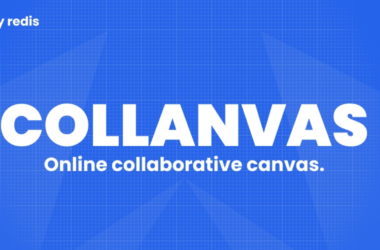Non-fungible tokens (NFTs), powered by blockchain technology, have opened up new possibilities for artists to make, collect, and value their works by turning them into unique and ownable assets.
Leading this change are NFT marketplaces, which offer creators a decentralized platform to display and sell their virtual artwork to other aesthetic lovers.
Below, we’ll explore what these digital ownership token platforms mean for the future of digital art, discussing their benefits, challenges, and prospects.
What Is a Digital Art Marketplace?
NFT art marketplaces are online applications that allow artists to tokenize their creations using blockchain, turning them into unique, ownable assets.
Some popular examples of such solutions are OpenSea, Rarible, and Foundation, where painters can list their assets for sale, and collectors can browse and purchase them using cryptocurrency.
Essentially, each NFT marketplace represents a combination of several components. They include:
- Listings: Platform listings typically include images or videos of the artwork, along with details such as the illustrator’s name, title, description, and price.
- Tokenization Tools: These tools help creators turn their works into digital assets. They typically involve minting non-fungibles, which means making up a unique ID and connecting it to the virtual artwork.
- Royalties and Smart Contracts: Lots of NFT apps use smart contracts to automatically pay artists royalties. These algorithms set a percentage of each resale to go back to the original creator, guaranteeing them ongoing payment for their work beyond the first sale.
- Auction and Bidding: Auctions let art fans bid on artwork live. They promote excitement and competition among bidders, driving up prices and making the artwork more visible.
Benefits and Opportunities of NFT Platforms
Running an online art solution can be a pretty good deal. Here are some reasons why.
First off, they give a chance to make money by charging fees every time someone buys or sells artwork on their software. These fees can add up to a significant amount of money, especially if there are a lot of transactions taking place.
Also, the market for tokenized assets is getting bigger all the time, which means more people are buying and selling online art. Owners can tap into this growing user base and attract more participants to their app.
Another incredible thing is that marketplace owners can team up with creators, galleries, and other businesses to offer special promotions or events, which can attract more attention to the solution and bring in new users.
Finally, if an online solution becomes successful, it could be worth a lot of money someday. Owners could sell the platform or attract investors, making a big profit.
Challenges and Considerations
Despite their potential, token marketplaces face various challenges and considerations.
One major concern is the impact on the environment. The technology behind existing NFT platforms uses a lot of energy, which raises worries about its effect on the planet.
Another problem is confusion about rules and regulations. It’s not always clear how non-fungible tokens should be taxed or what directions they need to follow.
Third, as more people become interested in digital assets, the systems that support them need to keep up. The technology might struggle to handle all the transactions, which may lead to delays or problems.
Finally, some people also have trouble getting into the world of virtual art because it can be complicated and expensive. This means that not everyone gets a fair shot at being part of it.
Addressing these challenges will take effort from everyone involved in non-fungible token trading. It’s essential to work hard to make sure that decentralized space remains fair, accessible, and respectful to creators and collectors everywhere.
Case Studies and Success Stories
Now, let’s explore a few case studies and success stories showcasing the impact of NFT marketplaces:
Beeple’s “Everydays”
One of the most well-known digital art sales is Beeple’s “Everydays: The First 5000 Days,” which Christie’s auctioned for $69 million in March 2021.
This auction was a big deal for virtual art, showing how crypto collectibles could change the creativity market. Beeple, also known as Mike Winkelmann, became widely known for this sale, encouraging many artists to try out non-fungibles.
CryptoPunks
CryptoPunks, a set of 10,000 distinct pixel art characters, is one of the earliest and most popular decentralized projects.
Even though they were initially free, CryptoPunks are now in high demand, with some selling for millions of dollars. This project’s success has led to other tokenized collections and confirmed the importance of decentralized collectibles in culture.
Ocean Front
In June 2020, illustrator Krista Kim grabbed attention by selling her online artwork “Ocean Front” for $1 million on the marketplace Async Art. The artwork showed a peaceful ocean scene in bright colors and was divided into layers, letting collectors engage with it.
Kim’s sale highlighted the increasing interest in crypto collectibles and revealed how illustrators can explore fresh ways of expression and teamwork on blockchain networks.
Crossroads
“Crossroads” is a joint blockchain-based artwork by well-known comic book artist José Delbo and contemporary artist Trevor Jones. It was launched on the Rarible platform in February 2021.
The artwork is a digital animation inspired by Bernie Sanders’ iconic “Inauguration Day” photograph. The auction drew a lot of attention from collectors, selling for over $6.6 million.
The success of “Crossroads” highlights how collaboration and cultural references can boost interest and value in online art.
The Future of Digital Art Marketplaces
Looking forward, the future of decentralized art software seems hopeful. As technology grows, we may see better connections between platforms, making trading and teamwork easier.
Also, improvements in blockchain scalability and eco-friendliness might tackle energy use and environmental worries.
Conclusion
In summary, NFT marketplaces represent an incredible new opportunity to make, enjoy, and estimate digital art.
They bring artists and collectors together, allow them to trade unique virtual creations, and provide space to gain recognition and compensation for their work.
And even though there are still some problems to overcome, decentralized platforms keep growing and changing, promising lots of new opportunities and monetization options.
Want to build your own NFT art platform? Contact us. We offer comprehensive NFT development solutions tailored to your needs.
The post The Future of Digital Art: The Rise of NFT Art Marketplaces appeared first on SCAND.








